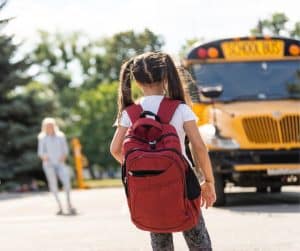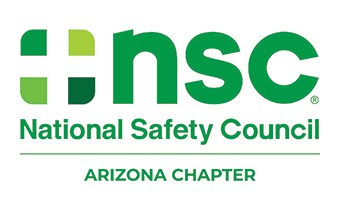 Colorful backpacks and new pencil cases aren’t the only signs school is back — just watch the cars and buses piling up around neighborhood schools. That traffic is a reminder of the safety precautions we need to take during the school year.
Colorful backpacks and new pencil cases aren’t the only signs school is back — just watch the cars and buses piling up around neighborhood schools. That traffic is a reminder of the safety precautions we need to take during the school year.
According to the National Highway Traffic Safety Administration, 976 school-transportation-related crashes killed 1,082 people between 2013 and 2022. Of those victims, 169 were either walking, waiting for the bus, biking, or riding to or from school in another vehicle.
Whether you’re a parent on drop-off duty, a commuter passing through a school zone, or a delivery driver navigating through neighborhoods, your awareness makes a difference. These tips can help protect students— and help you avoid a costly mistake.
Do Drop-Offs and Pickups Right
School traffic is hectic. Even if you’re running late, these basic rules keep students safer:
- Never double park. It blocks visibility for other drivers and children trying to cross the street.
- Avoid loading or unloading across the street. Kids may try to cross mid-block in unsafe conditions.
- Back up with care. Reverse slowly and scan all directions. Children are hard to see and move quickly.
- Carpool if possible. Fewer vehicles at the curb mean fewer chances for collisions.
- Slow down — even if you don’t see kids. School zone speed limits exist for a reason. Don’t assume the coast is clear.
- Be alert during evenings and weekends. Schools can still be active with sports, events, and after-school programs.
Watch for Pedestrians, Especially Little Ones
Protect pedestrians of all sizes by driving defensively and staying alert:
- Keep crosswalks clear. Stopping in a crosswalk can force pedestrians into traffic.
- Yield in active school zones. When lights are flashing or signs are posted, reduce your speed and be ready to stop.
- Follow the direction of crossing guards. Treat them like the traffic superheroes they are!
- Avoid distractions. Place your phone out of reach so your focus stays on the road. Kids can appear from between parked cars or side streets in an instant.
- Use caution around parks and neighborhoods. Not all kids go to school by car or bus — many walk through busy areas.
School Bus Safety: Know the Rules
Illegal school bus passing is dangerous and illegal. In all 50 states, you must stop for school buses when their red lights are flashing and the stop-arm is extended. Learn to recognize their signals:
-
- Yellow flashing lights mean the bus is about to stop. Slow down and be ready.
- Red flashing lights and an extended stop-arm mean the bus is loading or unloading students. You must stop until the lights stop flashing, the arm retracts, and the bus starts moving again.
- Never pass a school bus from behind— or from either direction — on an undivided road when it’s stopped.
- Stay back at least 10 feet. This is the most dangerous area for students getting on or off the bus.
To learn the school bus laws specific to your state, visit this state-by-state guide.
Driving Around Bikes: What to Watch For
Kids on bikes can be hard to see and might not follow all traffic rules. Here’s how to share the road safely:
- Leave at least 3 feet when passing. Slow down and maintain a safe buffer.
- Yield when turning. Let riders pass if you’re turning left and they’re coming toward you. If turning right, allow them to go through the intersection first.
- Check for bikes before opening your door. Kids may be riding along the curb or between parked cars. Pro tip: the far-hand reach.
- Watch for sudden moves. Children might turn without signaling or checking for traffic.
- Note any nearby bicycles. Riders can appear quickly from side streets or behind parked vehicles.
One Last Tip: Stay Calm and Commute On
The school year is stressful enough without preventable accidents. By exercising patience and caution, you can play a critical role in keeping children safe on the road.
To keep these tips and more top of mind, download the National Safety Council’s back to school safety checklist.
